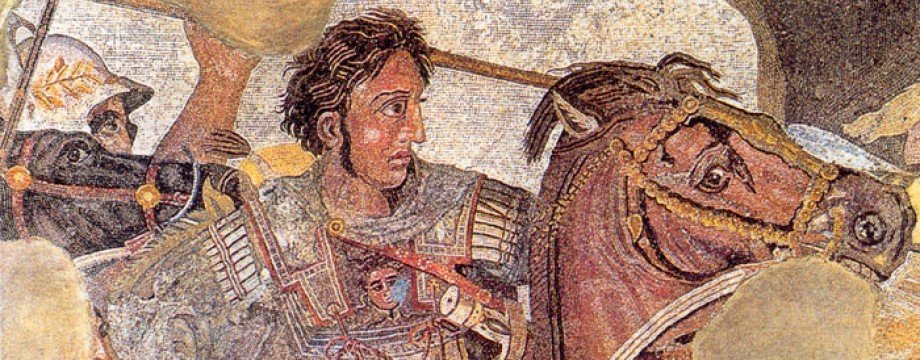In This Chapter
Alexander crosses the Danube and leads an assault on the Getae.
The crossing of the Danube took place without any hitches - the 4,00 horse and 10,000 foot who had stood on the opposite bank to oppose him did not stay overnight but withdrew to their tents.
Once on the far side of the river, Alexander waited until dawn before moving his men inland. They crept through a cornfield, the infantry sweeping their sarissas from side-to-side so as ‘to flatten the corn’.
After reaching the end of the cornfield, Alexander ordered his infantry to proceed ‘in rectangular formation’. The king himself took his cavalry off to the Macedonian right wing.
He found the Getaean warriors encamped together. They were shocked by the sight of the Macedonian army and crumbled under ‘the first charge of the [Macedonian] cavalry’.
The warriors of the Getae fled back to their ‘city’ 3.5 miles away. Alexander followed them. Seeing him, the Getae promptly decided to abandon their city and flee into the interior of their homeland. Alexander took the city, gathered anything of value that the Getae had left behind and ordered Meleager and Philip to take it away. As the plunder began its journey south, Alexander destroyed the city and sacrificed to Zeus the Saviour, Herakles and the Danube itself at a site beside the river for not standing in his way during the operation. No Macedonian soldiers were lost during this mission.
Word of Alexander’s exploits travelled far and wide. Ambassadors and envoys came to greet him and declare their people’s friendship. Among them were ‘envoys from Syrmus’ who we saw retreat to the island in the middle of the Danube, and Celts from faraway. Alexander asked them what they feared most; he expected them to say him but had the cheek to call them ‘a pretentious lot’ when they replied that they most feared the sky falling on their heads!
Thoughts
At first sight, the decision of the Getae to leave the Danube river bank seems an inexplicable one but as you read on their reason why quickly becomes clear. As Arrian makes clear, the Getae regarded the Danube as a strong defence against enemy invasion. They reckoned that any attempt to cross it would be difficult and that a bridge would have to be built for the purpose. Thus, when Alexander appeared in front of them having not bothered to build a bridge at all, they were in shock.
Wikipedia describes the ‘shock and awe’ military tactic in the following terms,
Shock and awe (technically known as rapid dominance) is a tactic based on the use of overwhelming power and spectacular displays of force to paralyze the enemy’s perception of the battlefield and destroy their will to fight
Shock and Awe - Wikipedia
This is how Alexander defeated the Getae.
Overwhelming power - Arrian tells us that the Getae found ‘the close-packed phalanx… terrifying’. The sight of the cavalry no doubt also terrified them
Spectacular display of power - the fact that the Macedonian army had so easily managed to cross the Danube - in one night and without needing to build a bridge.
One of Alexander’s numerous strengths as a general was his ability to adapt his tactics according the circumstances. Not just offensively, but also in the matter of defence. So, when the Macedonians approached the Getaeans, the infantry did so in a ‘rectangular formation’, which would protect the men if the Getaeans got the better of them. Alexander’s ability to adapt always allowed him to stay one step ahead of his rivals in the field, and can be considered one of the chief reasons why he remained undefeated in war.
When Alexander followed the Getaean warriors to their ‘city’, he remained very respectful of the enemy. Thus, he ordered his cavalry to ride ahead of the infantry to protect it in case of any Getaean ambush or counter-attack. The Getaens, however, were already done for, and so their ‘city’ was good only to be sacked and razed.
The mission against the Getae seems to foreshadow the lead up to the Battle of the Hydaspes River - in fact, it almost feels like a simpler version of that conflict. The essentials of both conflicts, however, is the same: arrival at a river, working out how to safely cross it, engaging the enemy.
Similarly, the arrival of the ambassadors from various native peoples also reads as a much simpler version of the diplomacy that Alexander carried out in 324/23 BC when he met ambassadors and envoys from ‘practically all the inhabited world’ in 324 BC as described by Diodorus (Dio. XVII.113). On that occasion, they not only came to make friends with him but present gifts, make treaties and seek his judgement.
